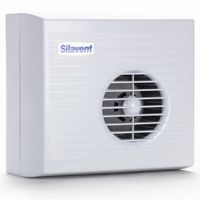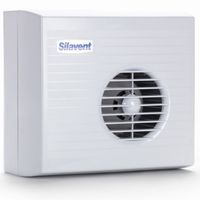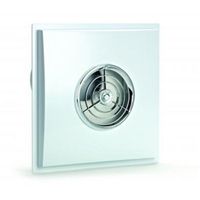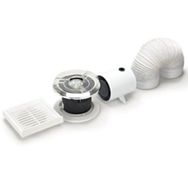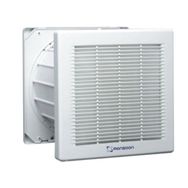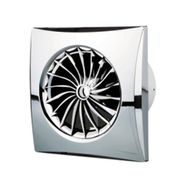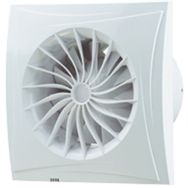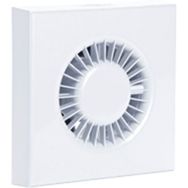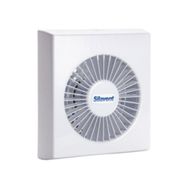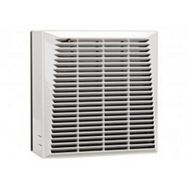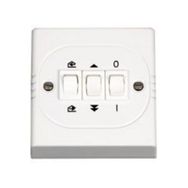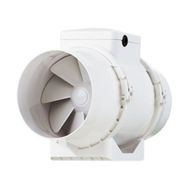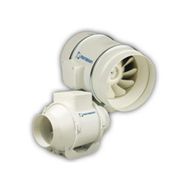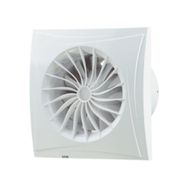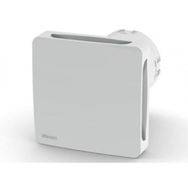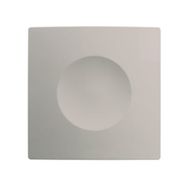Filters
Centrifugal Fans
Centrifugal fans (also known as centrifugal extractor fans) are used in both domestic and industrial applications.
They are widely used for ventilation and air conditioning in buildings, right through to industrial processes that require the movement of large volumes of air, including gas extraction in commercial environments.
Our fantastic range includes centrifugal fans from leading manufacturers and brands, including Domus Ventilation, available in a variety of extraction rates to suit your needs. Each model has been tested to meet robust performance standards and is designed to provide advantages in energy efficiency and air quality.
Browse our range below.
Bathroom Extractor Fan with Light
Commercial Extractor Fans
Domestic Extractor Fans
Domestic Extractor Fans (Humidistat)
Discover our range of centrifugal extractor fans
• Discrete installation
• Stylish and minimal design
• Quiet operation
• Effective ventilation
• Eliminate odours and mould growth
• Timer operated
• Ideal for long duct runs and fitting on an external wall without structural damage
• Durable fan casing
• Ideal for bathrooms, shower rooms, kitchens, commercial environments and other areas
• High static pressure rating for consistent airflow
• Robust casing and components to ensure a long service life
FAQs
How do extractor fans work?
A centrifugal fan is designed to create a continuous airflow by using centrifugal force to move the air outwards.
When the fan is turned on, the rotating impeller creates a low-pressure area at the centre, and air is drawn into the fan through the inlet.
The air is then accelerated by centrifugal force and pushed outwards towards the outlet of the fan. The speed of the fan blades and the shape of the housing determine the amount of air that the fan can move. As the impellers rotate, the angle of the blades and the housing design directly influence efficiency and static pressure levels.
What are the key components of a centrifugal bathroom extractor fan?
The centrifugal fan consists of a housing, an impeller and a motor, which work together to create the air flow.
The impeller is the main component of the fan and is made up of a series of forward curved or backward curved blades arranged in a circular pattern which rotate at high speed, allowing it to draw in air from the centre and propel it outwards.
The fan housing refers to the casing containing the impeller and is designed to direct the airflow through the fan.
The shape and size of the housing determine the fan's performance characteristics, which can also vary based on the power of the motor. Larger bathrooms may require a larger centrifugal bathroom extractor fan.
The fan also has an inlet where air enters and an outlet where the airflow is discharged from the room. These openings are designed to optimise airflow efficiency. Different classes of centrifugal fans are manufactured to suit specific requirements, such as higher static pressure or a greater number of air changes per hour.
What are the benefits of centrifugal extractor fans?
Air extraction and improved air quality
Centrifugal fans are popular thanks to their ability to extract air and maintain good indoor air quality. They are designed to promote a healthier living environment by removing stale air, odours and moisture from areas such as kitchens and bathrooms.
Bathroom extractor fans help to prevent mould by removing excess humidity from the air and preventing the build-up of condensation and high moisture levels.
Reduced noise levels
Centrifugal extractor fans are designed to operate quietly. The blades and housing design help to reduce air turbulence and minimise noise levels during operation for a peaceful and comfortable environment.
Versatile installation
Centrifugal fans can be mounted on walls and ceilings or directly in line with the ducting system. Some centrifugal extractor fans come with adjustable speed settings, giving you control over the extraction rate and allowing you to customise the ventilation and air movement for different spaces. This flexibility provides significant advantages when compared to axial blowers, particularly in environments where air needs to move against higher static pressure.
Are centrifugal fans energy-efficient fans?
Centrifugal fans can be moderately energy-efficient if they are installed correctly, are not in continuous operation and are maintained and cleaned regularly.
This allows the fan to operate as effectively as possible, helping to lower energy consumption and energy bills. When properly manufactured, tested and installed, these fans commonly provide reliable airflow while reducing wasted energy.
How do centrifugal fans control operation?
Centrifugal fans can be operated by a simple pull cord, a timer, or a PIR sensor that activates when motion is detected. These options give users complete control and ensure the fan works in accordance with building regulations.
Do centrifugal fans work intermittently or continuously?
Most models can be set for intermittent use or continuous running. Intermittent operation is often chosen in smaller spaces like toilets, while continuous fans may be used in kitchens or offices to maintain airflow.
What is the difference between a centrifugal fan and an axial fan?
A centrifugal bathroom fan works by generating pressure through an impeller, which then propels air outward in a continuous air stream, whereas axial fans with external rotor motors move air in a linear direction at high pressures, making them more suitable for larger spaces that require a continuous flow of air, such as warehouses or factories.
Centrifugal blowers are better suited for ducting systems with bends and changes in direction, as they can maintain airflow against higher static pressure along the axis of the system.
Can centrifugal fans handle gas as well as air?
Yes, centrifugal fans can be manufactured and tested to handle not only air but also certain types of gas, depending on the application. Always check the class and specifications of the fan before placing an order.
How many air changes per hour can a centrifugal fan provide?
The number of air changes per hour depends on the size of the fan, the angle of the impeller blades and the static pressure of the system. Domestic models typically meet standard bathroom and kitchen ventilation requirements, while commercial blowers provide higher air change rates.
Need a hand choosing the right centrifugal fan? Contact us or pop into your local store.


